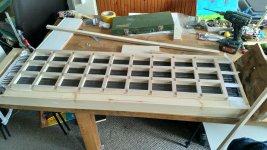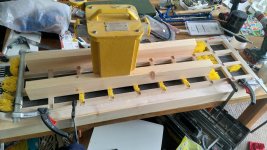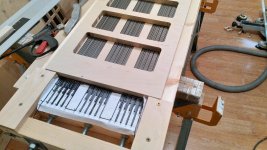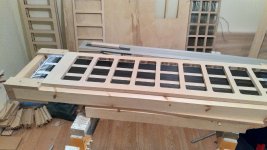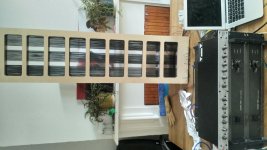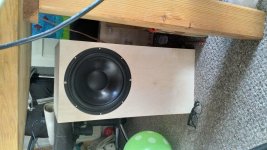Thanks to @CharlieM and @bolserst firstly.
I've started my journey on building some ESLs mainly inspired by Jazzman's blog.
A little bit of background, I got interested in ESLs back in 2014. Went to listen to some MLs and ended up buying some parts back in 2014. At the time I was thinking about perforated panels, but actually ended up buying 500 metres of wire. Things didn't progress much and I gave the materials away.. I got the bug again a few weeks ago (2021)! Managed to get the materials back and ordered the rest of the ingredients and made a start today. Really pleased!
Thought I'd post some pictures and try and keep a record of progress on this thread.
I don't think anything will be ground breaking here, but might be interesting for other future builders who want some inspiration and some pictures to refer to.
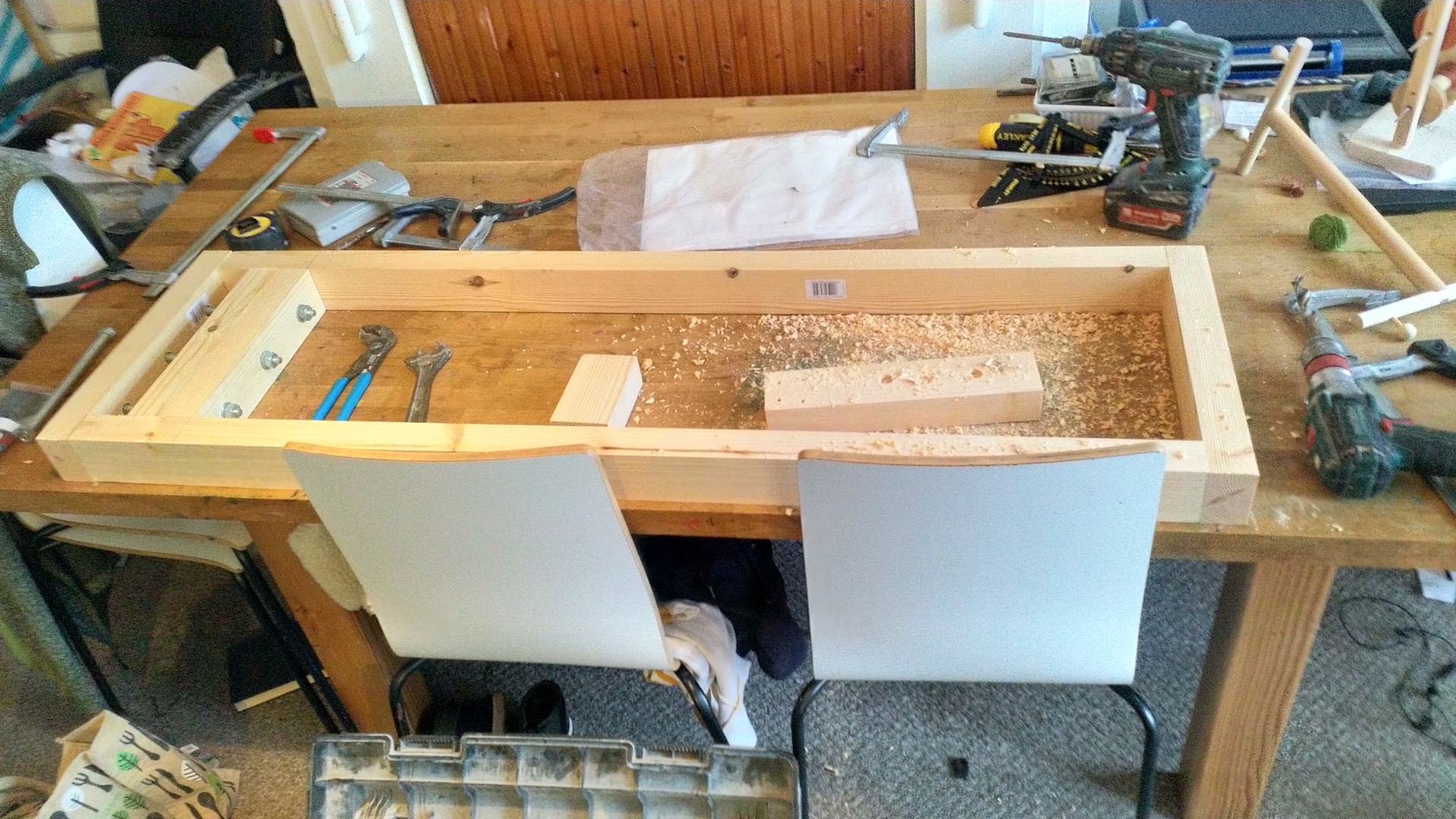
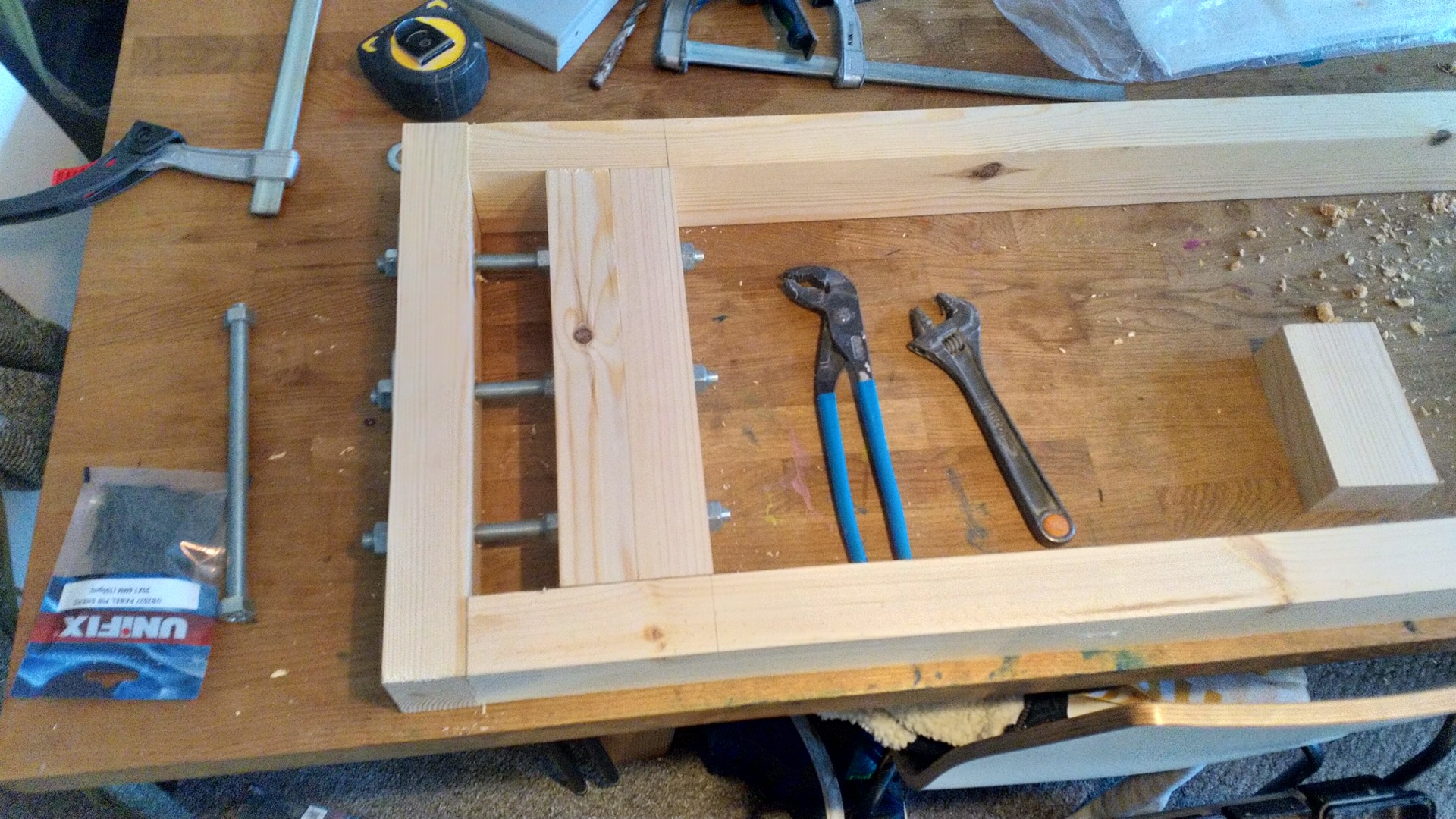
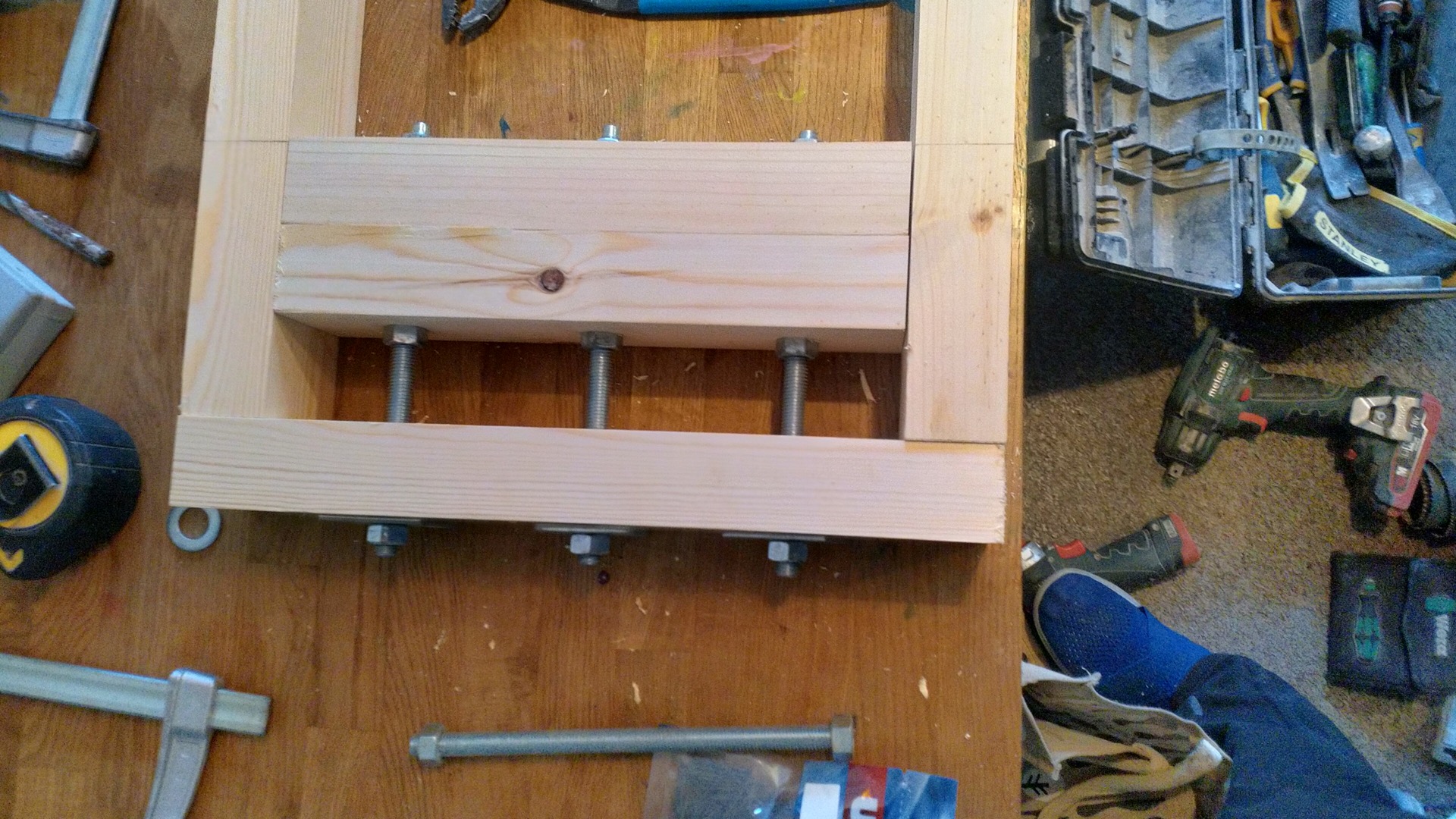
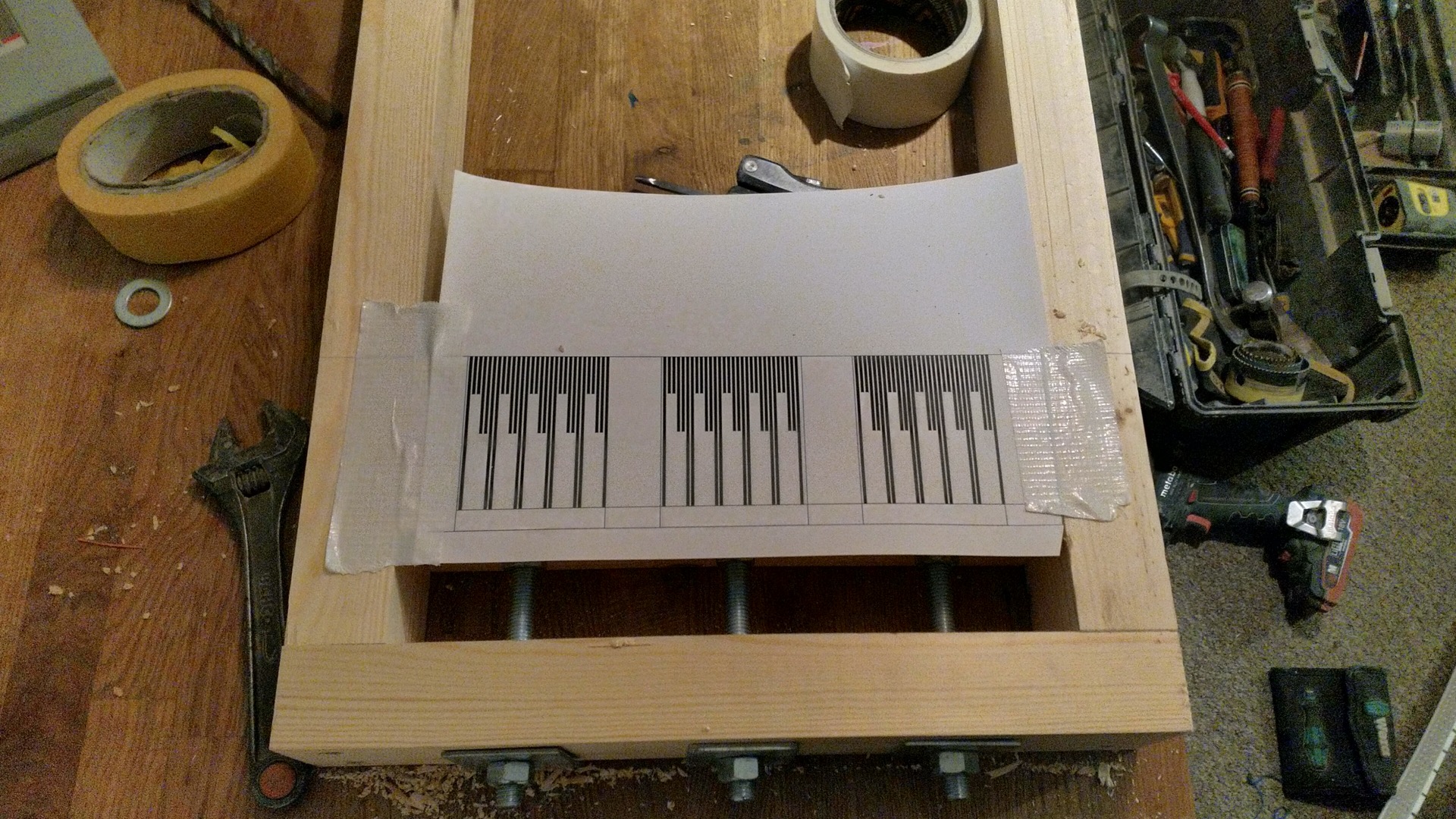
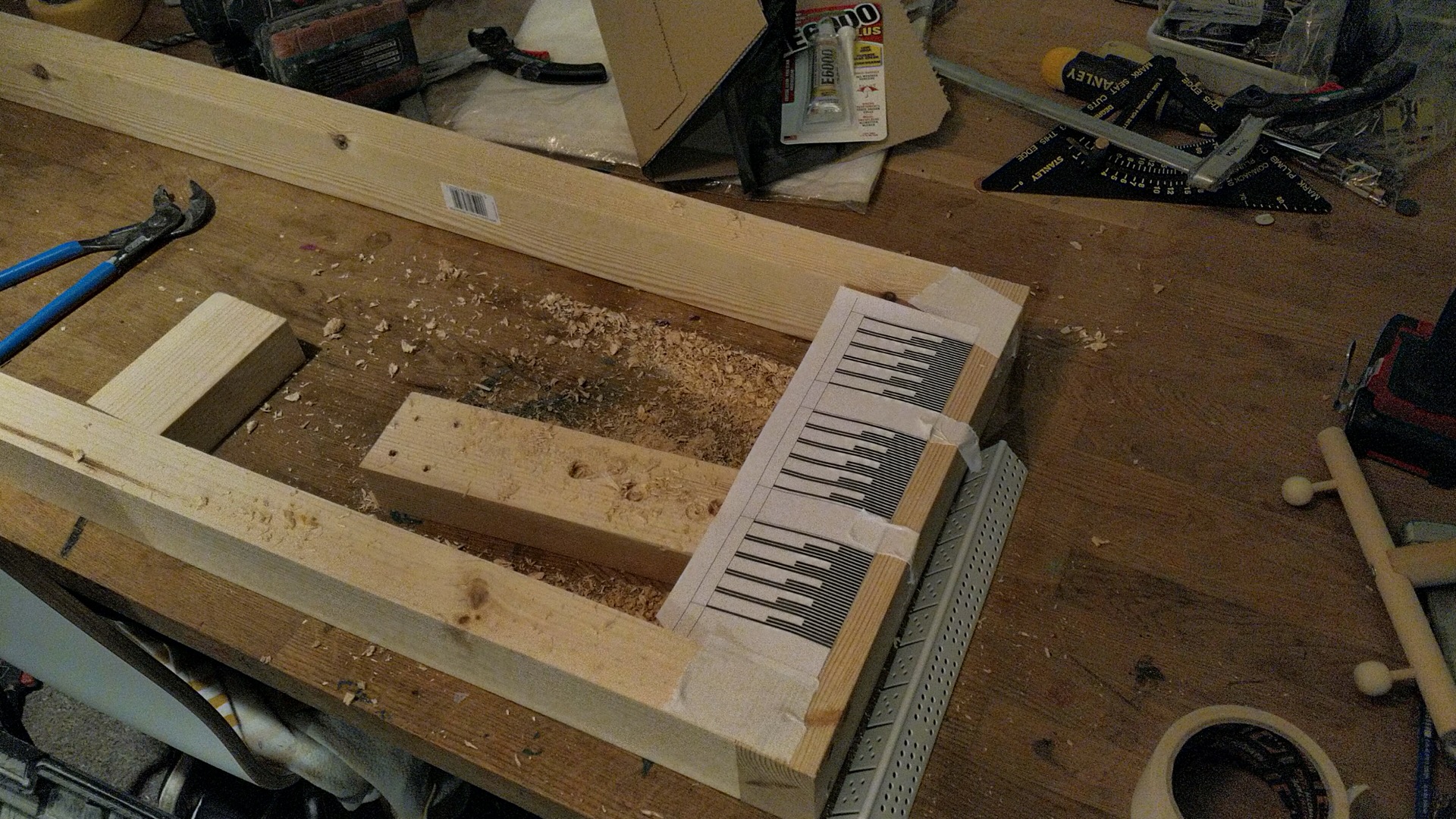
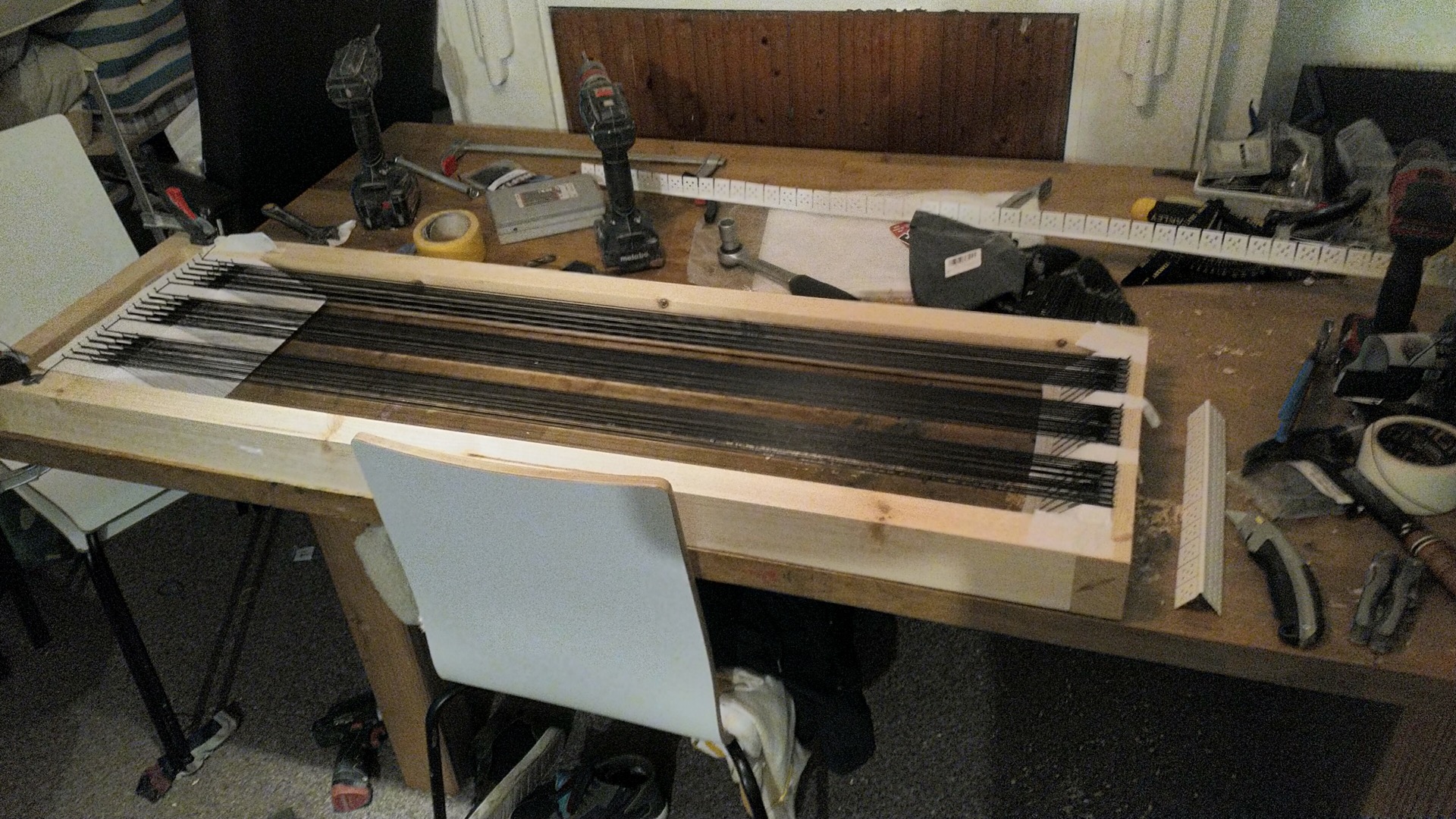
I've started my journey on building some ESLs mainly inspired by Jazzman's blog.
A little bit of background, I got interested in ESLs back in 2014. Went to listen to some MLs and ended up buying some parts back in 2014. At the time I was thinking about perforated panels, but actually ended up buying 500 metres of wire. Things didn't progress much and I gave the materials away.. I got the bug again a few weeks ago (2021)! Managed to get the materials back and ordered the rest of the ingredients and made a start today. Really pleased!
Thought I'd post some pictures and try and keep a record of progress on this thread.
I don't think anything will be ground breaking here, but might be interesting for other future builders who want some inspiration and some pictures to refer to.





An externally hosted image should be here but it was not working when we last tested it.
An externally hosted image should be here but it was not working when we last tested it.
An externally hosted image should be here but it was not working when we last tested it.
An externally hosted image should be here but it was not working when we last tested it.

Sweet! Pictures are good. I ended up with a spare pair of panels from Charlie and have been using them ever since. They sound fantastic. Would love to build my own some day. Cool jig!
Even more interesting was spacing the cables with 1mm packers - in the future short of a 3d printer I'll be using Charlie's previous technique of an m20 bolt with a 2.5mm pitch..
Here's a picture of me gluing the wires to the birch ply wood grid
Here's a picture of me gluing the wires to the birch ply wood grid
Attachments
A few learning points along the way - my stretcher jig is a bit too short (I had in mind making 1200mm staters). Going to make a slightly longer jig.
The birch plywood grid doesn't fill me with confidence for the future when it comes to keeping a constant distance between wires and mylar..
So (forgotten after reading so many threads) but like another forum member, I'm going to use a sheet of ply and route out openings - should be flatter
The birch plywood grid doesn't fill me with confidence for the future when it comes to keeping a constant distance between wires and mylar..
So (forgotten after reading so many threads) but like another forum member, I'm going to use a sheet of ply and route out openings - should be flatter
On a safety note - down the line - when the ESLs are running - in terms of panels - what dangers do they present?
I'm presuming as the wires are insulated, these are fairly safe to touch? But the membrane on the other hand can be filled with high voltage - but low amps, so quite shocking, but not much heat?
I've provisioned to cover the stats with speaker cloth (just in case).
Is it feasible to have the stats wall mounted? Problems with rear reflections? (Hybrid unit - so bass would sit on the floor)
I'm presuming as the wires are insulated, these are fairly safe to touch? But the membrane on the other hand can be filled with high voltage - but low amps, so quite shocking, but not much heat?
I've provisioned to cover the stats with speaker cloth (just in case).
Is it feasible to have the stats wall mounted? Problems with rear reflections? (Hybrid unit - so bass would sit on the floor)
I ended up putting a panel inside my jig..It will be interesting to see how you plan to attach the wire support structure.
Delivery today with lots of the electrical components for the segmentation.. plus transformers for the mylar. Largely based on your shopping list at Mouser, thanks Charlie.
On a safety note - down the line - when the ESLs are running - in terms of panels - what dangers do they present?
I'm presuming as the wires are insulated, these are fairly safe to touch? But the membrane on the other hand can be filled with high voltage - but low amps, so quite shocking, but not much heat?
I've provisioned to cover the stats with speaker cloth (just in case).
Is it feasible to have the stats wall mounted? Problems with rear reflections? (Hybrid unit - so bass would sit on the floor)
Wall mounting would not be good, but the wires will not heat up and pose no danger. Insulated wire stators are very reliable.
I managed to assemble one speaker today. I've connected everything up. But! The esl is very, very quiet. What's very strange is the transformers seem to be literally generating sound (I have them in a cardboard box!
Any suggestions and pointers greatly appreciated.
Also a reminder on a safety precautions would be welcome - from memory, the diaphragm will discharge in about 8 hours?
Any suggestions and pointers greatly appreciated.
Also a reminder on a safety precautions would be welcome - from memory, the diaphragm will discharge in about 8 hours?
I suspect you either do not have charge on the diaphragm, or the transformers are wired out of phase.
After powering the bias supply OFF; the diaphragm should still hold a charge for at least several minutes. You would need an HV probe to measure the charge on the diaphragm, or you could merely short the lead from the diaphragm to one of the stator leads and observe whether you get a spark. If the diaphragm is holding a charge; you should see a spark jump when you bring its lead within a quarter inch of one of the stator leads.
If you have charge on the diaphragm; then check the phasing on the transformers.
Cheap toroidal power transformers work great for ESL's but you can't always trust their winding polarities will match the phasing dots on their data sheets, or the schematic on my blog.
One of the VTX transformers I tested had its red/black leads reversed at the factory, such that one of the 6v windings was out of phase. And when I assembled the transformer pair their windings cancelled and I got no sound. Once I figured out the phasing error and reversed the leads, they worked fine and sounded wonderful.
Winding polarities can be checked with a DVM and jumper wire by applying 115VAC to the primary and measuring the voltages out of the secondaries, as shown here:
Polarity Test of Transformer (Explanation + Diagrams) | Electrical4U
After powering the bias supply OFF; the diaphragm should still hold a charge for at least several minutes. You would need an HV probe to measure the charge on the diaphragm, or you could merely short the lead from the diaphragm to one of the stator leads and observe whether you get a spark. If the diaphragm is holding a charge; you should see a spark jump when you bring its lead within a quarter inch of one of the stator leads.
If you have charge on the diaphragm; then check the phasing on the transformers.
Cheap toroidal power transformers work great for ESL's but you can't always trust their winding polarities will match the phasing dots on their data sheets, or the schematic on my blog.
One of the VTX transformers I tested had its red/black leads reversed at the factory, such that one of the 6v windings was out of phase. And when I assembled the transformer pair their windings cancelled and I got no sound. Once I figured out the phasing error and reversed the leads, they worked fine and sounded wonderful.
Winding polarities can be checked with a DVM and jumper wire by applying 115VAC to the primary and measuring the voltages out of the secondaries, as shown here:
Polarity Test of Transformer (Explanation + Diagrams) | Electrical4U
Many thanks for the pointers Jazzman.
I think I'm rushing a bit! Too much excitement.
I think you're right - no charge to the diaphragm.
Will check over my wiring.
Here are some progress photos:
I think I'm rushing a bit! Too much excitement.
I think you're right - no charge to the diaphragm.
Will check over my wiring.
Here are some progress photos:
Attachments
Okey dokey. I've checked over my wiring - I did have some issues which I've fixed now.
My next problem is that the 250ma fuse for the setup up transformer is blowing as soon as I switch on. Am I ok to use a 1amp fuse (in UK so 240v mains). Or should I recheck all my wiring and persevere with the 250ma.
My next problem is that the 250ma fuse for the setup up transformer is blowing as soon as I switch on. Am I ok to use a 1amp fuse (in UK so 240v mains). Or should I recheck all my wiring and persevere with the 250ma.
Just to add - the 250ma fuses I have are 'fast acting' Maybe I'd be better off with slow acting/blow'?
I assume we are talking about the small E-core transformer at the front of the bias supply and not one of the larger toroidal transformers powering the stators---
The bias supply schematic shown on the main page of my blog shows that little transformer wired for 115V US mains voltage. That is; primary windings in parallel and secondaries in series to give 230V out. So; if you wired that transformer the same way; then that would be incorrect because you have 230V mains voltage in the UK.
For 230V input; you would need the primaries and secondaries wired the same way (both either in series or in parallel). On the main page of my blog there is an "Amp/panel interface" link which takes you to a back page, and at the bottom of that back page there is a schematic showing how to wire that transformer for 230V input.
However; the fact that it's blowing a 250ma fuse indicates something else wrong-- just wondering if one of the secondary windings smoked because it would have stepping the voltage up to 460 volts, instead of 230 volts, if it were wired for 115 volt input as shown on the main page schematic.
The bias supply schematic shown on the main page of my blog shows that little transformer wired for 115V US mains voltage. That is; primary windings in parallel and secondaries in series to give 230V out. So; if you wired that transformer the same way; then that would be incorrect because you have 230V mains voltage in the UK.
For 230V input; you would need the primaries and secondaries wired the same way (both either in series or in parallel). On the main page of my blog there is an "Amp/panel interface" link which takes you to a back page, and at the bottom of that back page there is a schematic showing how to wire that transformer for 230V input.
However; the fact that it's blowing a 250ma fuse indicates something else wrong-- just wondering if one of the secondary windings smoked because it would have stepping the voltage up to 460 volts, instead of 230 volts, if it were wired for 115 volt input as shown on the main page schematic.
Hi Charlie - yes you're right I meant the bias supply transformer.
Thanks - I'll follow your schematic for the 240v
Thanks - I'll follow your schematic for the 240v
- Home
- Loudspeakers
- Planars & Exotics
- ESL Build based on Jazzman's
